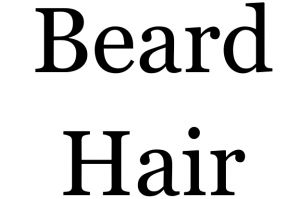Pleonasm
In language, we can identify different types of rhetoric figures that allow us to express better an idea or to give the rhythm to the reading of a text. This is the case of rhetoric figures of diction, which are used to modify the form or sound of words, or their syntactic form within the sentence. Pleonasm falls into this figure category that allows us to use unnecessary words that do not add anything to the comprehension of the sentence with the function of reinforcing the message. In our daily life, it is possible to come across many daily pleonasms in the street such as: "I personally", "go down", "go up", "I saw it with my own eyes", "shut your mouth" among others.
What is pleonasm?
The pleonasm is a rhetorical figure of diction that allows to reinforce the message, adding words that do not contribute to the comprehension of the sentence, only serves to intensify the sentence. Also known as redundancy or batology and for some linguists, it does not represent a rhetorical figure, but a defect or lack of language. This figure of speech can accompany a subject, a verb or an adjective.
History of pleonasm
Although the detailed origin of this rhetorical figure has not been determined, it could be affirmed that its origin could have been generated in ancient Greece, since its name comes from there. Its conscious or unconscious use has always been manifested in all eras, from ancient to modern.
The expressions that use pleonasm have been commonly recorded in the popular context, and in the field of poetic lyrics this rhetorical figure has facilitated the development of rhythm in many verses and has given the strength and emotion that are transmitted in this genre.
It is now better known as redundancy and although its function is to give strength to the sentence, many scholars excuse themselves after making use of it.
In other cases, the pleonasm can give rise to a mockery or a reflection on itself. Example: one person says, “go up” and another says “of course because I cannot go down”.
Etymology
The word pleonasm comes from the Greek and then, was transferred to Latin. This term is composed of two words “pleon” which means more or too much and “asmo” which is a suffix meaning movement. In this sense, it can be said that this figure of speech brings redundant or unnecessary terms to the text.
Types of pleonasm
Pleonasms can be of three types depending on the words in the sentence. They can be pleonasms of nouns, verbs or adjectives:
- Pleonasms of nouns are the unnecessary words that accompany the noun. Examples: free gift, pairs of two, eyewitness.
- Pleonasms of verbs are the unnecessary words that accompany the verb. Examples: go outside, go up, go inside.
- Pleonasms of adjectives are the unnecessary words that accompany the adjective. Examples: a light white wall, a dark black night.
Examples of phrases
Below are some examples of pleonasm and we will proceed to explain why they are.
Example 1
“Entrance access”
All access is to enter something, so “entry” is an unnecessary element in the phrase and can be catalogued as pleonasm.
Example 2
“Drink liquid”
Drinking means ingesting a liquid, for this reason, the word “liquid” brings nothing to the phrase and is a pleonasm.
Example 3
“Round circle”
Every circle is round, so it is not necessary to add the adjective “round” that does not add anything to the phrase.
Example 4
“Constellation of stars”
Constellations are of stars, so it is not necessary to accompany this word with stars because it does not contribute to the understanding of the message.
Example 5
“Foreign currency”
This phrase is very common by many who do not know that currencies are always foreign currency. In this case, there is a pleonasm for ignorance, where the adjective foreign does not bring anything new to the word currency.
Example 6
“Male child”
The word son includes the masculine gender and for this reason it is not necessary to add the word male.
Example 7
“Kiss me with your kisses”
In this phrase the pleonasm is given by adding to the verb kiss, “with your kisses” because you only kiss with kisses. However, this type of phrases can be observed in poems to give intensity and strength to the emotional message you want to convey.
Example 8
“Early in the morning, early in the morning, early in the morning you’re rolling on the floor.”
Miguel Hernandez
In this phrase by Miguel Hernández, two pleonasms can be observed. The first is early in the morning and the second is rolling on the ground. As you can see, this rhetorical figure gives strength to the message, but does not give value to the comprehension of the text since one always gets up early or only rolls on the ground.
How to cite this article?
Briceño V., Gabriela. (2019). Pleonasm. Recovered on 23 February, 2024, de Euston96: https://www.euston96.com/en/pleonasm/










